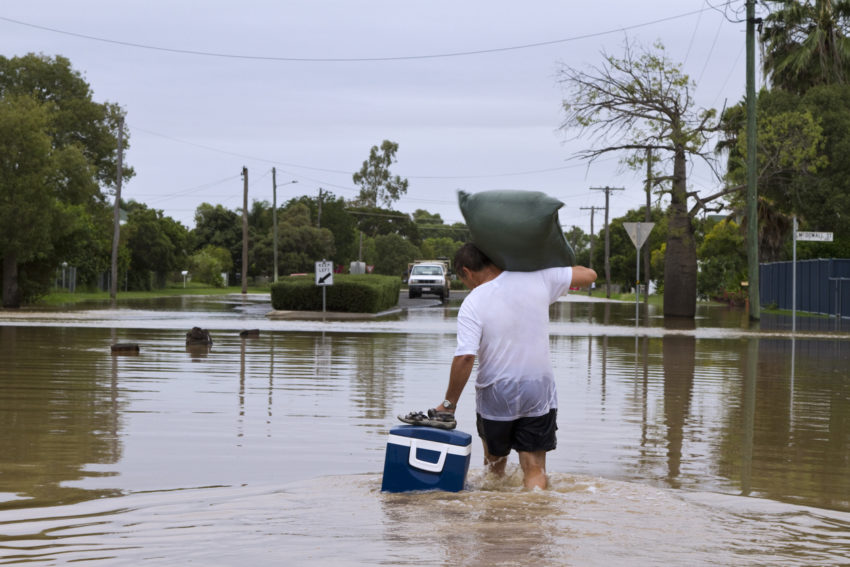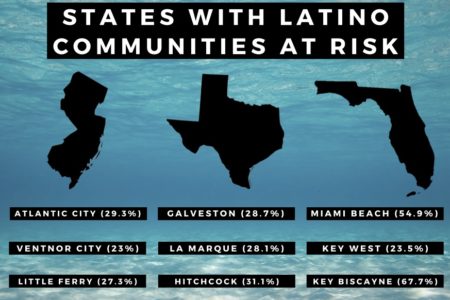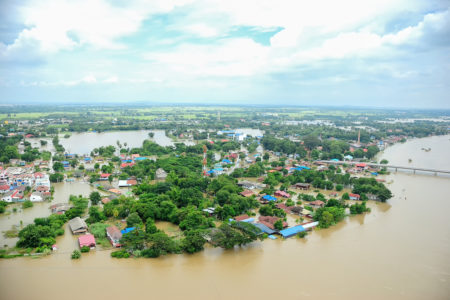
Share On Social!
The impacts of climate change will significantly affect the lives of Latinos and all Americans — including drowning their cities.
By 2100, 35 towns and cities in the U.S. could experience such extreme flooding that those places could become inhabitable, according to an in-depth news report published in USA Today from 24/7 Wallstreet.
Latinos, who make up between 23% to 67.7% of the population in 10 of these areas, face substantial risks if climate-change trends continue.
“The steady rise in global surface temperatures is largely attributed to human-caused greenhouse gas emissions,” writes report authors Michael B. Sauter and Thomas C. Frohlich. “With rising temperatures, the world’s ice has been melting and sea levels have been rising. As a result, barring major interventions, sooner or later thousands of coastal communities around the world will become uninhabitable.”
Still, there is good news: You can speak up for long-term Climate Change science today!
Deep Dive into the Numbers
24/7 Wallstreet came to these conclusions using a 2018 Union of Concerned Scientists (UCS) study, which analyzed current data to discover insights into rising sea levels, growing rates of floods, and how those will affect U.S. coasts. 
Specifically, the research classified cities with large populations that are estimated to experience substantial and continual flooding given current emissions levels. UCS found that by 2060, numerous places will face the risk of flooding 26 times or more per year — essentially making those communities uninhabitable.
With an estimated 2- to 7-foot rise in sea levels, due to accelerated melting of Earth’s icecaps, scientists urge that these findings are in-line with the present direction of global greenhouse gas standards.
“Millions of Americans living in coastal communities will face more frequent flooding, as the tides inch higher and reach farther inland,” UCS writes. “As sea levels rise, persistent high-tide flooding of homes, yards, roads, and business districts will begin to render properties effectively unlivable, and neighborhoods—even whole communities—financially unattractive and potentially unviable.”
Still, both the reporters and scientists note that action can reduce such risks, such as developing wetlands, levees, and other instruments.
They also state that numerous cities have begun making such changes and that these preventative steps are not included in their measures.
Greater Impacts to Come
Furthermore, researchers estimate that many of the 35 communities will roughly be halfway underwater by 2060.
Several of these cities have large populations of Latinos, who already face greater pollution threats than their peers and struggle with environmental issues:
 Miami Beach, Florida (54.9% Latino)
Miami Beach, Florida (54.9% Latino)- Atlantic City, New Jersey (29.3%)
- Key West, Florida (23.5%)
- Galveston, Texas (28.7%)
- Ventnor City, New Jersey (23%)
- La Marque, Texas (28.1%)
- Hitchcock, Texas (31.1%)
- Key Biscayne, Florida (67.7%)
- Little Ferry, New Jersey (27.3%)
- Revere, Massachusetts (30.1%)
Not only will climate alter the face of the country, but the economy and real estate will also experience monumental changes, according to the research.
“More than 300,000 homes worth a combined $117.5 billion are likely to be at risk of chronic tidal flooding within 30 years, according to UCS analysis and projections,” Sauter and Frohlich write. “By the end of the century, that total could rise to 2.4 million homes and more than $1 trillion in property damage – and those estimates are based only on existing homes.”
Latinos already lack access to affordable housing, so more damage to the homeownership status quo will only go to hurt this community.
Despite growing concerns, the Trump administration has taken numerous steps to reduce environmental regulations on clean air, water, and groundwater.
Now, they’re diminishing research in long-term climate change projections.
Send the United States Geological Survey an email, urging them to rethink this decision!
Editor’s Note: This article is part of a collaboration between Salud America! and the Hoffman Toxicant-Induced Loss of Tolerance (TILT) program at UT Health- San Antonio. To find out if you are TILTed due to exposure to everyday foods, chemicals, or drugs, take a self-assessment or learn more about TILT.
By The Numbers
1
Quick Survey
Can help you find out how chemically sensitive you are



